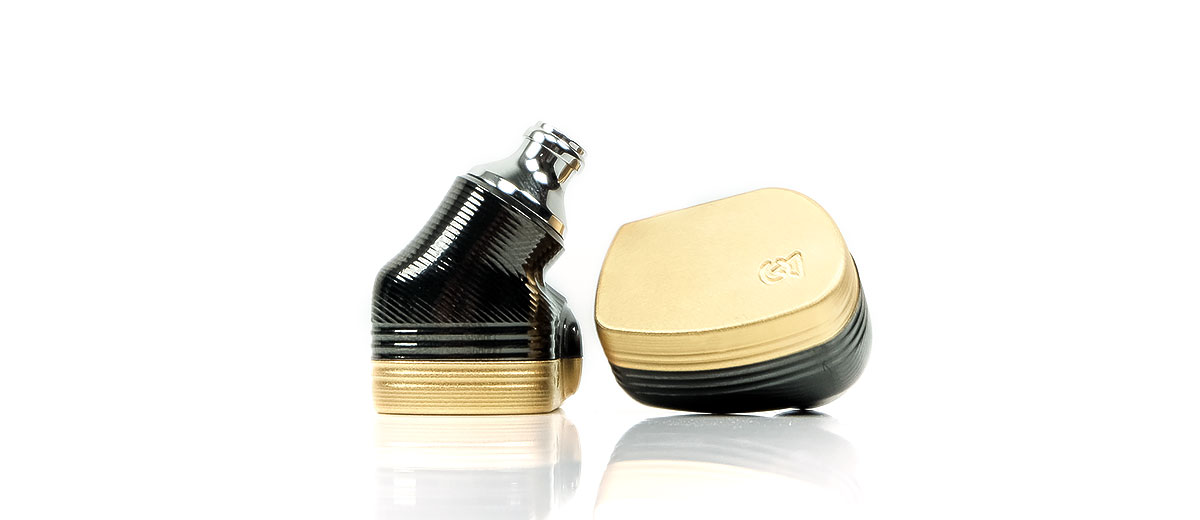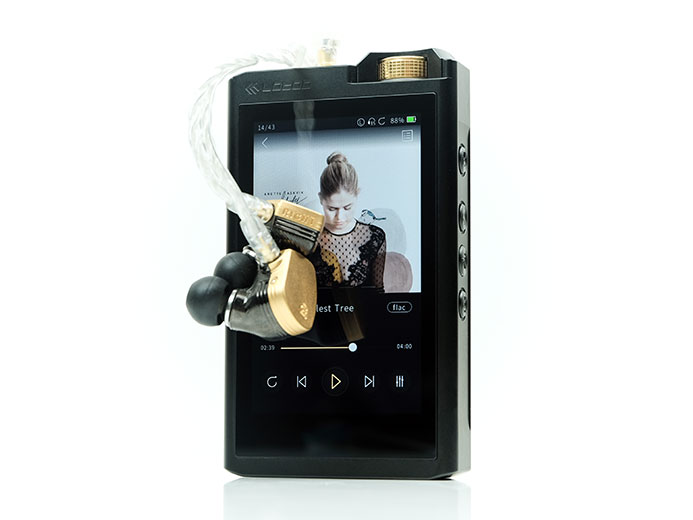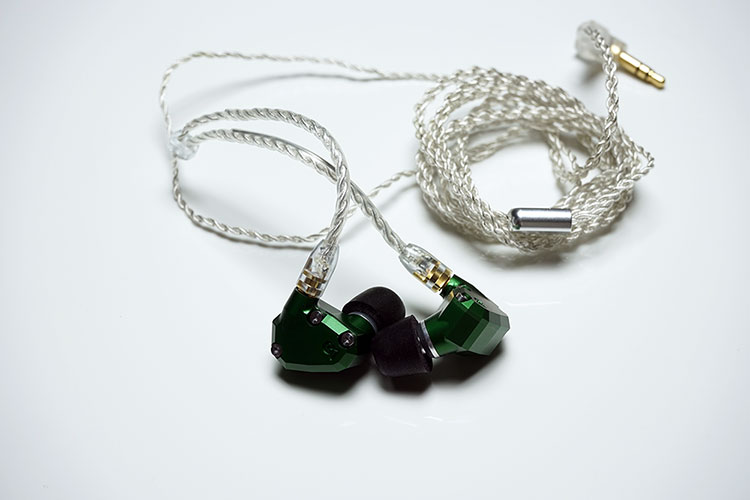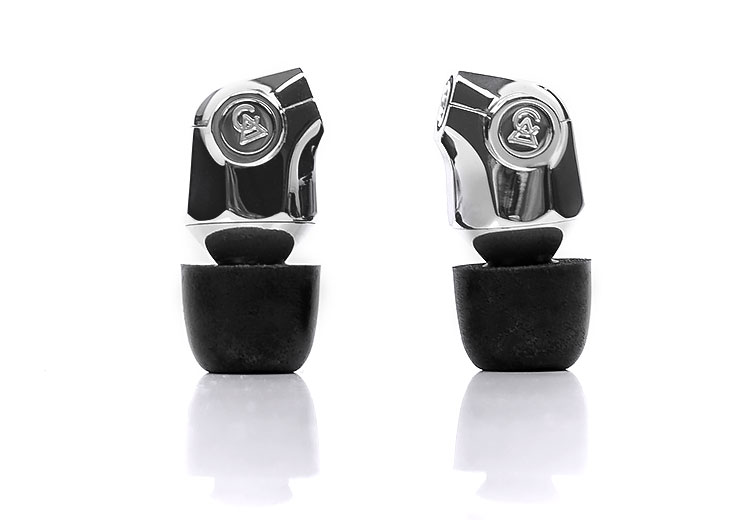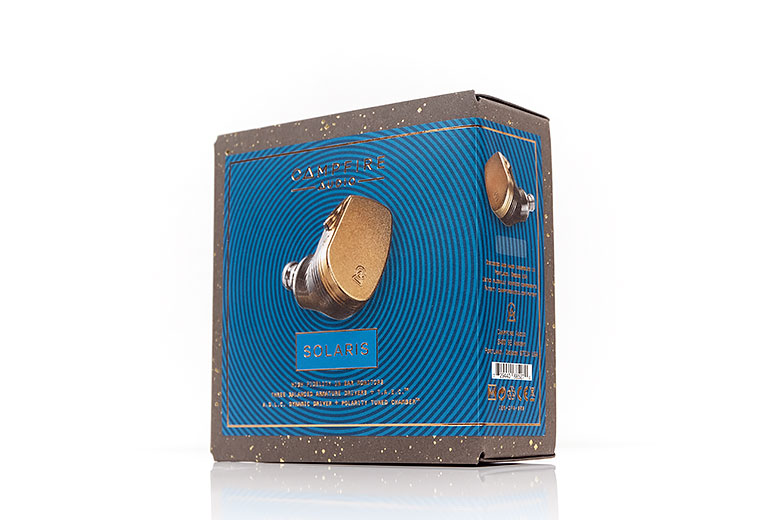Sound Impressions
Summary
The Solaris has perhaps one of the most balanced sound signatures I have heard to date from a hybrid monitor. That is not to say it is a pure reference tuning. There are still aspects that clearly mark out the Solaris as being a hybrid and that low-end is distinctly dynamic in terms of decay and texture.
Rather, CA has resisted letting the 10mm dynamic driver ‘off the hook’ in much the same way as they did with the Atlas. The resulting frequency response is thus mildly u-shaped, perhaps even W-shaped but nothing as aggressive as the Dorado or Atlas low-end. This is much more refined in terms of power without an overpowering level of coloration if that makes sense.
In turn, this frees up plenty of space for the mids which have a distinctly forward and detailed nature to them up to around 3-4k. The Solaris vocal presence seems just that bit more vibrant sounding and forward in nature than Andromeda’s milder vocal lift.
Treble on the Solaris has that same excellent extension and headroom as the Andromeda but overall, I find it just it a tiny bit more relaxed in nature compared to the all-BA variant. That is not to say it is rolled off. Far from it. The Solaris sounds clean and sparkling as opposed to being soft and laid back.
Soundstage
Depth
The lack of Atlas levels of quantity on the low-end might give an initial impression of less pure sub-bass power on the Solaris. However, I found the level of depth and detail to be excellent. It is not as intimate or aggressive as the Dorado or Atlas but it does sound open and spacious with excellent levels of texture. It certainly outguns the Andromeda low-end in a big way.
When the source track calls upon it the Solaris does deliver a strong sense of depth. For example, Deadmau5’s Let Go from their recent W:/2016 album had no shortage of sub-bass presence and that classic dynamic driver level of decay and texture.
Width
The width on the Solaris is also excellent though the forward vocal positioning and upper mids around 2-3k will push up a bit further than the neutral lower midrange. Instrumental positioning is just slightly behind higher-pitched vocals which I tend to prefer for my own personal preferences.
Imaging is excellent by the way. That slight odd-harmonic drawn down from the forward top-end brings out a little edge on spatial cues that make them really easy to pick out with the Solaris, especially if paired with a highly resolving source.
Height
No problems with height and headroom with the Solaris. It never sounds shelved down, dark or too laid-back. The peppy upper treble response gives a more than a reasonable perception of articulation and airiness.
Bass
The Solaris low-end has a slight sub-bass bias rather than any overt mid-bass emphasis. It will not sound as warm or as forward in its mid-bass as the older Dorado and as such lower-pitched instrumental timbre will not sound quite as thick and rich sounding. However, it has far more depth and power and will deliver a much better level of dynamic range and control.
It also wipes the floor with the Andromeda low-end though in terms of quantity and that is probably the biggest difference you will hear between these two. Yes, it is a touch slower given this is BA versus dynamic driver but it reaches a lot deeper and by far the more powerful sounding of the two stablemates.
Source Factor
I did note that there is a degree of variation in the Solaris low-end tuning depending on the source you pair it with. Source pairings will enhance or flatten out that bass response on the Solaris to a certain extent.
The likes of the Lotoo PAW Gold Touch will give you the most neutral low-end though with excellent detail. The iFi xCAN will deliver far more physicality and slam but does not have the same level of resolution as the Touch nor does it sound as balanced.
Mids
There is a small but linear dip from around 200Hz to 1k on the Solaris FR which pulls back a degree of warmth in the instrumental timbre of the Solaris compared to the Dorado. Personally, I think the tone is a little more accurate on the Solaris and the transition is just that more coherent and smoother sounding from the bass to mids on the Solaris.
Some lower-pitched instrumental positioning on the Solaris is a little behind vocals which straddle the 2-3k where the Solaris gets a fair substantial bump up to 3k. As a result, some higher-pitched vocals, particularly female vocals will sound more forward and vivid in nature which I just live as a vocal enthusiast. Lower-pitched vocals sub 1k have less presence but do sound clean and clear without any perceived veil.
There is a small partial overtone that is more odd-harmonic in emphasis beyond the 2k marker. You can hear it in instrumental timbre such as percussion and higher-pitched vocals.
It is not splashy by nature nor sibilant but it does draw a little from the upper treble for its upper harmonic order and amplifies it a touch more than the more even-harmonic bias of the lower mids. I find using the foam tips to get the harmonic balance here just right compared to the Final E tips.
Treble
Treble on the Solaris benefits greatly from the T.A.E.C. chamber with close to Andromeda style level of extension and headroom. I say close because it does feel that the Andromeda sustains a 7-10k peak a little more compared to the Solaris. It also feels more emphasized on the Andromeda since the mids are not quite as ‘bumped’ as they are on the Solaris.
There is a mild pull-back on the 4-6k region as far as I can hear, perhaps as this is the crossover point on the Solaris BA highs (mids and dynamic driver have no earlier crossover). You will get plenty of sparkle though just you won’t find the percussion timbre harsh or splashy sounding. It is a clean rather than a wet-sounding tone nevertheless.
Synergy
Efficiency
The Solaris is rated at 10Ω and 115dB sensitivity. It is marginally easier to drive than the Andromeda making it possibly the sensitive IEM CA has released to date.
We tested the Solaris with the Sony 1Z, Lotoo Paw Gold Touch, and the iBasso DX200 with the AMP 1 card and there are no issues with power demands whatsoever. Even with smartphones such as the LG G6 and my trusty old Blackberry Passport, you will have no issues with loudness.
Noise
The Solaris sensitivity levels will pick up higher noise floors and those sources and amps that hiss with the Andromeda will show up hiss also on the Solaris. That being said, the Solaris did a better job in suppressing that hiss than the Andromeda which I was slightly surprised at.
Sources such as the FiiO X5iii and the Cayin N8 also had marginally lower noise floors and hiss than the Andromeda. I also found the noise performance with the excellent ALO Audio V5 to be marginally better with lower hiss levels.
I would not recommend the Oriolus BA300S tube amp pairing if you want a black background. In fact, that amp was virtually unusable with the Solaris with a balanced 4.4mm cable, the hiss was simply too high for comfort.
Better noise floor pairings included the Lotoo PAW Gold Touch in low gain, the Sony NW-WM1Z unbalanced output, and the Cayin N5iiS. All three had much better low noise performance and plenty of gain control with the Solaris.
Pairings
I didn’t find the Solaris to have huge scaling potential like their older Vega but it does resolve better with good quality amping. We found this also to be the case with the Atlas using the same A.D.L.C 10mm driver. The Vega was the one that needed bags of power to get the most out of it and more often than not the Vega is hooked into a desktop amp in our office as a result.
Cayin N5ii/iFi xCAN
The Cayin N5ii delivered a very smooth but neutral signature and fairly neutral bass response with its unbalanced 3.5mm output. However, we got a far more full-bodied presentation using the line-out from the N5ii to the new iFi xCan. The low-end sounded a little more aggressive, further forward, and also a lot punchier with the xCan and the Solaris.
Sony NW-WM1Z
With the Sony 1Z 3.5mm output, the Solaris low-end remained punchy and full-bodied but the resolution was that bit better than the N5ii. The staging was also a bit wider and more holographic sounding on the 1Z compared to the N5ii. I also felt the top-end was a little airier on the 1Z than the xCan’s slightly softer sound with the Solaris.
Lotoo PAW Gold Touch
Possibly the most reference-like DAP pairing was with the Lotoo PAW Gold Touch. It doesn’t have the same robust low-end body of the xCAN nor is it as punchy as the Sony 1Z. Instead, you get a very balanced presentation with the Solaris with a neutral sound than the 1Z. There is also little more top-end presence and body but it never comes across as harsh sounding with the Solaris.
Chord Hugo 2
Probably my favorite pairing was the Hugo 2. This was a blend of that reference sound of the PAW Gold Touch combined with a little more body of the 1Z to deliver a very natural but highly detailed performance from the Solaris.
It also produced the blackest background outside of the N5ii. The dynamic range was an eye-opener with a very responsive and detailed low-end and a big jump from the flatter N5ii experience. The Solaris treble, in particular, has an excellent presence and body but nothing sharp or overly bright.
Select Comparisons
Campfire Audio Dorado
$999
Technical
Campfire Audio has phased out the Dorado (along with the Vega) in their current line-up to make way for the newer Atlas and Solaris. This was CA’s first hybrid monitor consisting of the Lyra II’s 8.5mm Beryllium PVD Dynamic Driver and a dual BA implementation with the same Tuned Acoustic Expansion Chamber™ (TAEC) technology you will find in the Andromeda and the Solaris.
The Solaris packs in a much bigger chambered 10mm A.D.LC. dynamic driver from the Atlas, as well as 3 BA drivers as opposed to two with a dedicated rear-port, vented BA for the midrange. It is an altogether more complex internal configuration with a more powerful dynamic driver to boot.
Both look very different visually. I still love that small form factor of the Dorado and its lighter weight. It is much more discreet than the Solaris in that regard. However, the Solaris has way more visual “pop” with its shell contouring and the 24K gold-plated faceplate. It also looks to be machined to a much higher standard.
The Solaris seals marginally better than the Dorado using the same foam tips. The comfort levels are roughly the same with the Dorado feeling lighter in the ear but the Solaris feeling a touch more secure.
Performance
The Dorado is rated at 15Ω and 107dB compared to the 10Ω and 115dB rating of the Solaris. In our testing with a Sony 1Z, PAW Touch Gold, and iBasso DX200 we found the Solaris to get louder faster and generally much easier to drive on a wider range of sources.
These are traits we found in the Atlas when we reviewed it last year so it is not surprising that the Solaris is showing similar levels of performance given they share the same dynamic driver. Sources such as the mid-fi Cayin N5iis and the summit-fi Sony 1Z were dead silent with both IEMs and both had enough power to drive them satisfactorily.
The enhanced sensitivity and lower resistance of the Solaris do mean you will hear a bit more hiss than the Dorado on amps with higher noise floors such as the BA300S tube amp from Oriolus. Sources such as the FiiO X5iii will be dead silent with the Dorado but you will hear a tiny amount of hiss with the Solaris.
Tonality
It is a shame the Dorado is still not being sold as it is still a great performing hybrid monitor. That being said, there is a palatable difference in the level of detail and openness between the two monitors with the Solaris just that more expansive and cleaner sounding of the two.
Bass
The Dorado has a touch more mid-bass lift using that older Lyra II 8mm dynamic driver so it carries a touch more warmth up to the lower mids but it does not have the same sense of depth and power as the Solaris’s bigger 10mm A.D.L.C. driver. Nor does as it sounds as well textured and open right throughout.
Mids
That bass-to-mids transition on the Solaris sounds a lot more coherent this time around for a hybrid. The instrumental timbre is more neutral and accurate on the Solaris and not as thick or as warm sounding as the Dorado.
Both have a 2k emphasis and both have a forward-sounding vocal presence but the openness of the Solaris and the slightly greater 2k emphasis provides a much more engaging and livelier vocal delivery. Again, the texture and detail favor the Solaris. You will hear a difference in the level of resolution the Solaris can offer with that additional midrange driver
Treble
Treble on both follows a similar tuning with both monitors opting for a gradual 5-8k rise and a slight dip at the 4k point so presuming both have a similar driver crossover point. Both treble performances have a certain ethereal quality to their timbre and both extend quite well using the T.E.A.C tech.
The Solaris does seem to have bit more amplitude on that curve so treble presence is a little more obvious and it does create the perception of more sparkle and better headroom than the Dorado as a result.
Campfire Audio Andromeda
$1099
Technical
I guess you can say the Andromeda was the breakthrough IEM for CA. The fact they are still selling it and variations thereof (SS) when the likes of the Lyra and Jupiter have fallen away tells you how enduring the sound of the Andromeda is. I still use it as a reference tool in a lot of our reviews and will continue to do so.
The Andromeda, for those not in the know, is CA’s former flagship 5 driver BA monitor. It is a ‘gen 1’ design as I call it with that edged finished, green anodized paint over a CNC machined alloy.
The Andromeda is bigger than the Dorado but still quite a bit smaller than the Solaris. It will feel a bit more snug in the ear and does not stick out as much as the Solaris.
Some found the edging to rub a little in the ear making it a touch uncomfortable though personally I never felt that when using the Andromeda. Both isolate as well as each other. In all honesty, with the foams, there is not much of a difference.
Performance
The Andromeda is rated at 12.8Ω and 115dB compared to the 10Ω and 115dB of the Solaris. On paper, the Solaris would seem to be even more efficient than the Andromeda and in real-world testing that proved to be the case but only marginally so.
On both the iBasso DX200 with Amp 1 and the Sony 1Z the Solaris was marginally louder than the Andromeda at similar volume levels in low gain mode. You really do not need to a huge amount of power to drive either of these IEMs.
Of course, both will pick up hiss on high noise floors very easily but surprisingly the Solaris demonstrated marginally better resistance to hiss than the Andromeda. It still picked up hiss but it was not as pervasive using the Oriolus B300S and ALO Audio’s beautiful little V5 tube amp.
Tonality
The most immediate tonal difference between these two monitors is the low-end quantity and quality. Now I have been a firm admirer for many a year of the bass response of the Andromeda.
It is not the heaviest in the world, it is a BA-type signature after all. However, it has enough heft and warmth to provide a nice sense of PRaT to the overall signature and a more than decent fundamental.
Bass
The Solaris changes that dynamic completely. The low-end has more physicality with a definite dynamic driver signature in terms of more texture, detail, and a bit more decay.
It has more depth and more power and when called upon really delivers the goods for kick drums and EDM over the Andromeda. Yet, at the same time, this is not an Atlas signature so it is still slightly reserved and not completely off the hook so do not expect a thundering sub-bass presence.
Mids
The second change is the level of midrange emphasis. The Andromeda is not exactly neutral in terms of vocal positioning. It has a nice gentle 1-4k rise and fall that tastefully pushes forwards vocals to the front.
Instrumental positioning is a little behind with a lower midrange that is slightly dipped in comparison though nothing I ever found terribly thin sounding or diffuse. Quite natural and easy to listen to actually.
The Solaris has a much more pronounced 1-4k rise and fall and much more attention-grabbing as a consequence. Instruments have a bit more authority and power on the Solaris over the Andromeda. The Andromeda has a lovely natural tone to its timbre but lacks a little bit of presence compared to the Solaris’s performance which I prefer.
Treble
Both have a very similar clean treble tuning with the differences a lot more nuanced than I thought it would be. The Andromeda seems to have a bit more sustained treble energy around 7-10k than the Solaris. I would say around 1-2dB less 7k emphasis on the Solaris compared to Andromeda.
Campfire Audio Atlas
$1299
Technical
For a brief moment earlier in the year the Atlas was the flagship monitor and the replacement of the Vega. The advent of the Solaris takes away that top spot but still leaves the Atlas as CA’s top dynamic driver monitor.
Both the Solaris and Atlas share the same A.D.L.C. 10mm dynamic driver with the beryllium MMCX connectors but that’s about it in terms of physical similarities. This is like silver versus gold, left of field design versus slightly more traditional, channel-agnostic versus dedicated channels.
The Solaris is the bigger of the two, but I would expect that given the additional drivers it has to accommodate. I like the fact the Atlas can fit straight down or over the ear also. It may not be quite as secure in the ear as the Solaris but the isolation is just as good with the foam tips and they are also a touch lighter.
I like ho both also have the MMCX connectors deeper into the shell compared to the older Dorado design. I feel less likely to lose my grip when snapping on and off the cable which is always a pain with MMCX.
Performance
The Atlas is rated at 19Ω and 105dB and yes, it is a little harder to drive than the Solaris though much more efficient than the older Vega driver. Neither will present a problem to higher-powered DAPs such as the DX200 and the Cayin N8 in terms of output power.
Naturally, the more demanding Atlas is more resistant to hiss and higher noise floors than the Solaris with a much quieter background on portable tube amps and sources such as the Cayin N8 and FiiO X5iii.
Tonality
A massive difference in tuning with a very clear direction for both. The Atlas is much more V-shaped in the classical sense with an emphasized mid and sub-bass by at least 7-8dB over the Solaris.
Bass
You are going to hear a much stronger low-end and more power from the Atlas’s ALDC 10mm driver tuning. The Solaris curving on the low-end is still mildly enhanced in favor of sub-bass over mid-bass presence but it is a much gentler lift than the Atlas. You still get that same sense of depth but not quite as much rumble or punch.
Mids
The mids on the Atlas are more dipped than the Solaris, especially in the lower-mids up to1k and it’s the second major difference you will hear between these two monitors. The Solaris low-to-mids transition is a little smoother and more even sounding.
The Atlas 200Hz to 1k dip prevents its instrumental timbre from becoming too thick and warmed up from the elevated low-end but it also pushes back instrumental presence more than the Solaris presentation.
The instrumental timbre on both is reasonably neutral with the Solaris perhaps the more accurate and slightly cleaner of the two with better separation. Here is where you start to hear the balanced armature effect in terms of detail and speed.
Vocals have a more forward and intimate positioning on the Solaris compared to the Atlas with an approximate 3-4dB greater lift, especially around the 2-3k marker.
Treble
Treble tuning on both is quite different in the peaks and bumps with the Atlas giving a lot more emphasis on its upper mids and lower treble compared to the more muted Solaris lower treble.
Percussion has slightly less bite and presence on the Solaris compared to the Atlas. Both have a peak around 8-10k from what I can hear for sparkle and air with the Atlas having slightly more elevation and presence in that region.
Over the course of our testing, the balance of the Solaris played out much better with mid-centric rock compared to the Atlas’s natural bias to pop, RnB, and EDM.
Our Verdict
The Solaris is Campfire Audio’s most mature and refined sounding universal monitor to date. The hybrid tuning is very coherent sounding and definitely a qualitative upgrade on the now discontinued Dorado.
I am particularly impressed by the controlled performance of the 10mm A.D.L.C. driver that ‘tore up the show’ inside the Atlas. It still retains excellent depth and power when called upon but it is much more nuanced than the room shaking Atlas signature.
The Solaris brings a refreshingly musical dynamic to EDM and rock that the Andromeda did well with but perhaps lacked the natural texture and detail of that 10mm driver.
It is also their most “rad and pimpy” design yet in terms of build and materials used to date. I love how it looks, to be honest, and it was a real joy to photograph for this review. The Solaris will catch a few eyes on the retail shelf for sure and provide an interesting contrast to the radical chrome silver look of the Atlas.
Honestly, the value to performance ratio of the Campfire Audio Solaris is excellent for a flagship monitor.
Campfire Audio Solaris Technical Specifications
- 5Hz–20 kHz Frequency Response
- 115 dB SPL/mW Sensitivity
- 10 Ohms @ 1kHz Impedance
- Less than 1% Total Harmonic Distortion




